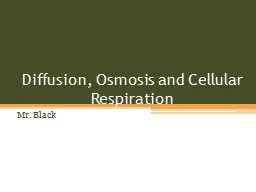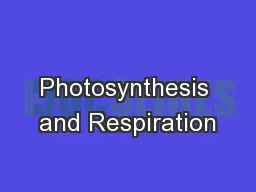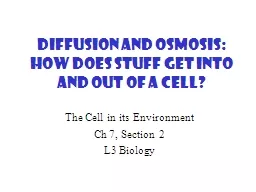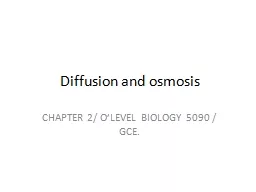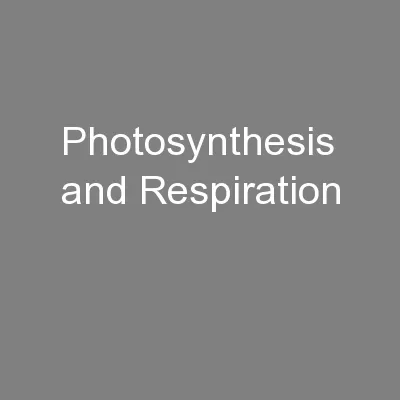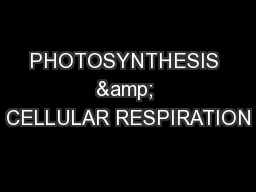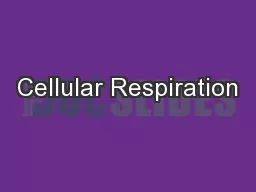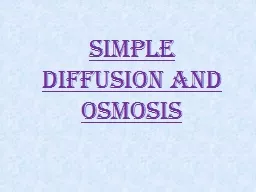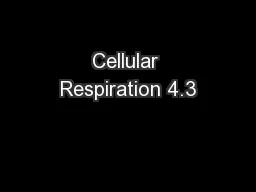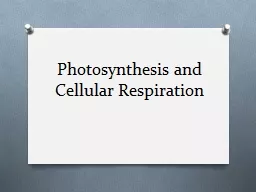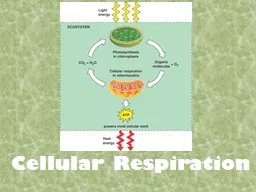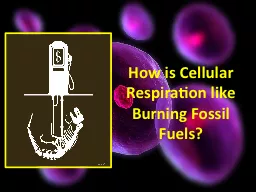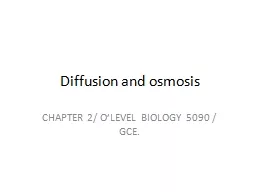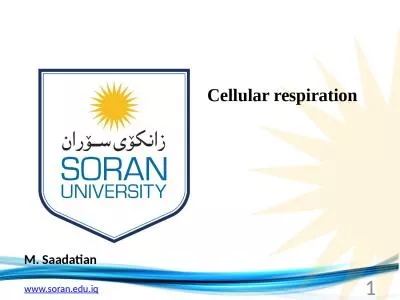PPT-Diffusion, Osmosis and Cellular Respiration
Author : phoebe-click | Published Date : 2017-06-04
Mr Black Warm Up February 10 2016 What is an organelle During a chemical reaction Reactants increase while the products decrease Reactants decrease while the products
Presentation Embed Code
Download Presentation
Download Presentation The PPT/PDF document "Diffusion, Osmosis and Cellular Respirat..." is the property of its rightful owner. Permission is granted to download and print the materials on this website for personal, non-commercial use only, and to display it on your personal computer provided you do not modify the materials and that you retain all copyright notices contained in the materials. By downloading content from our website, you accept the terms of this agreement.
Diffusion, Osmosis and Cellular Respiration: Transcript
Download Rules Of Document
"Diffusion, Osmosis and Cellular Respiration"The content belongs to its owner. You may download and print it for personal use, without modification, and keep all copyright notices. By downloading, you agree to these terms.
Related Documents

